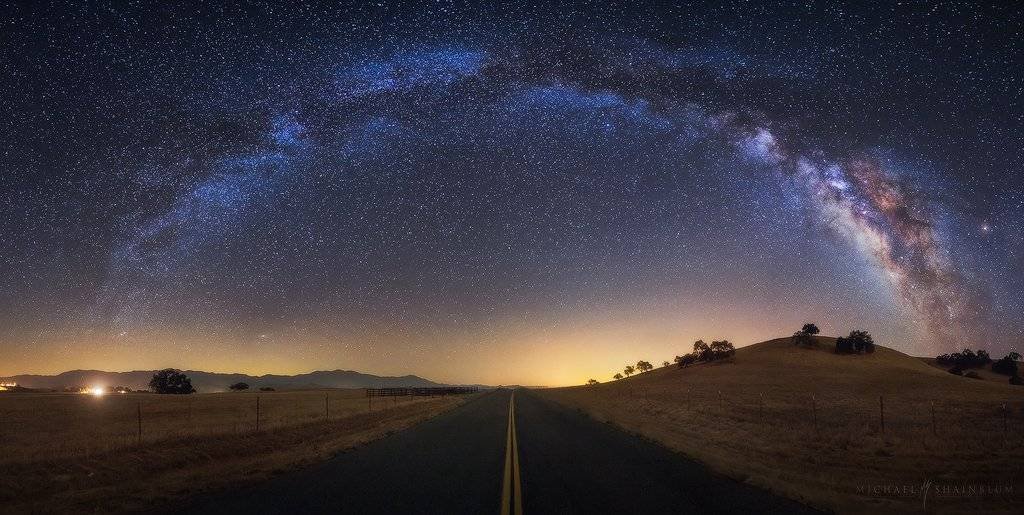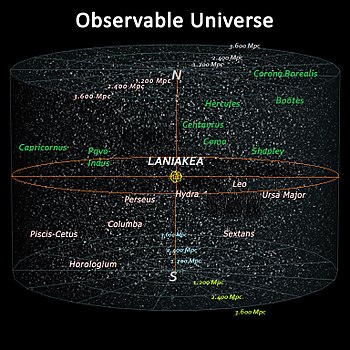The cosmic microwave background (CMB) is the fingerprint of the Big Bang. This remnant radiation occurs throughout the sky, with a temperature 2.73 degrees above absolute zero (about -454 degrees Fahrenheit, or -270 Celsius). While the CMB is fairly uniform, it does have some (very small) fluctuations. These fluctuations hold the key to details about both the Big Bang and the very early lifetime of the universe. Now, researchers have determined that a Cold Spot, an area of the CMB 0.00015 degrees below its surroundings, isn’t due to a lack of matter in the area, as previously thought. Ruling out this mundane possibility leaves open the door for more exotic explanations of the Cold Spot.
In a
study led by Ruari Mackenzi and Tom Shanks at Durham University's Centre for Extragalactic Astronomy and published in the
Monthly Notices of the Royal Astronomical Society, the group explores the possibility that a “supervoid” of space — an area lacking a significant number of galaxies and other matter — is responsible for the Cold Spot. Both regular matter and dark matter tend to clump together in space, forming structures such as clusters and walls in some areas, while leaving voids without much material in others. This effect is exacerbated by the expansion of the universe, and causes the CMB coming from the direction of a void to look different than CMB radiation that must travel through areas of space more densely populated on its way to Earth.
Previous studies used a technique called photometric redshift to measure the distance of galaxies in the direction of the Cold Spot. This technique uses a galaxy’s perceived colors to estimate how far away it is, because more distant galaxies appear redder than their nearby counterparts. However, photometric redshifts often have significant uncertainties. Mackenzi and Shanks’ team instead used spectroscopic redshifts, which break apart the light from an object and are much more accurate, to determine the distance to 7,000 galaxies in the direction of the Cold Spot with data from the Anglo-Australian Telescope.
The more accurate data revealed, however, that there is no supervoid in the direction of the Cold Spot. Instead, that area of the sky looks much like the rest, with clusters of galaxies and smaller voids between them. When the sky in the direction of the Cold Spot was compared with another area of the sky without a cooler CMB behind it, no significant difference was found. “The voids we have detected cannot explain the Cold Spot under standard cosmology,” said MacKenzie in a
press release detailing the results.
What does this mean? Standard cosmology is the model we currently use to describe the universe around us. Observations that challenge this model must be examined carefully, but can be used to further refine our model to ensure it’s correct.
Even without a supervoid in the way, the team estimates a likelihood that the Cold Spot appeared by random chance as 1 in 50. According to Shanks, “This means we can't entirely rule out that the Spot is caused by an unlikely fluctuation explained by the standard model. But if that isn't the answer, then there are more exotic explanations.”
Such exotic explanations, he says, include “a collision between our universe and another bubble universe. If further, more detailed, analysis of CMB data proves this to be the case then the Cold Spot might be taken as the first evidence for the multiverse – and billions of other universes may exist like our own.”
The
multiverse describes a set of infinite universes, which includes the one in which we live. To date, no evidence has been found that the multiverse is more than science fiction, but researchers are continually pushing the boundaries of the observable universe to determine whether this concept is fact or fiction. While at the moment the Cold Spot is certainly not definitive evidence of a multiverse, it does indicate a problem in our standard cosmological model that may need addressing if the cause of the temperature fluctuation in this area remains unclear.
http://www.cnn.com/2017/05/14/opinions/what-explains-the-universes-cold-spot-lincoln/index.html
 i should have used the scientific calculator...
i should have used the scientific calculator...


